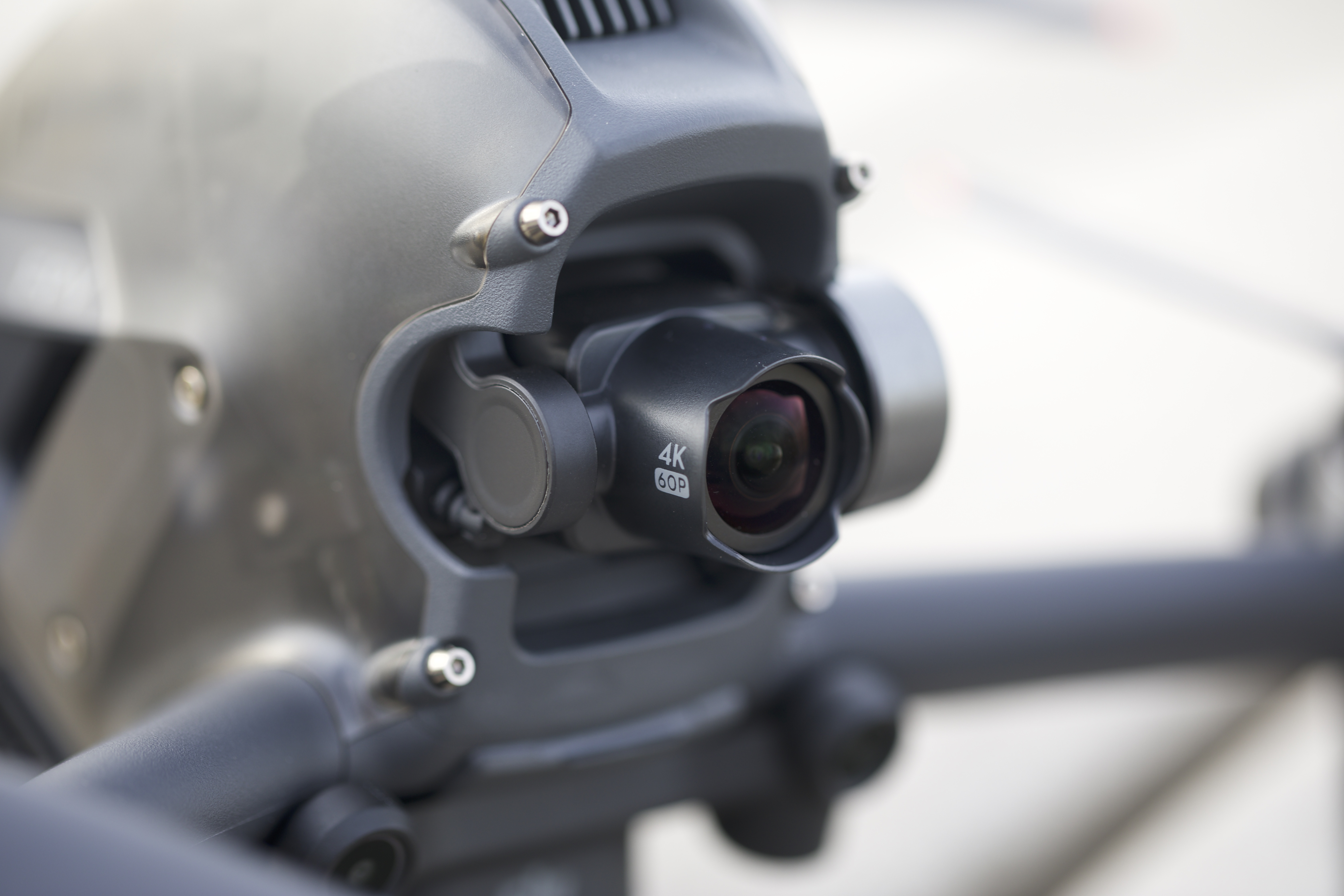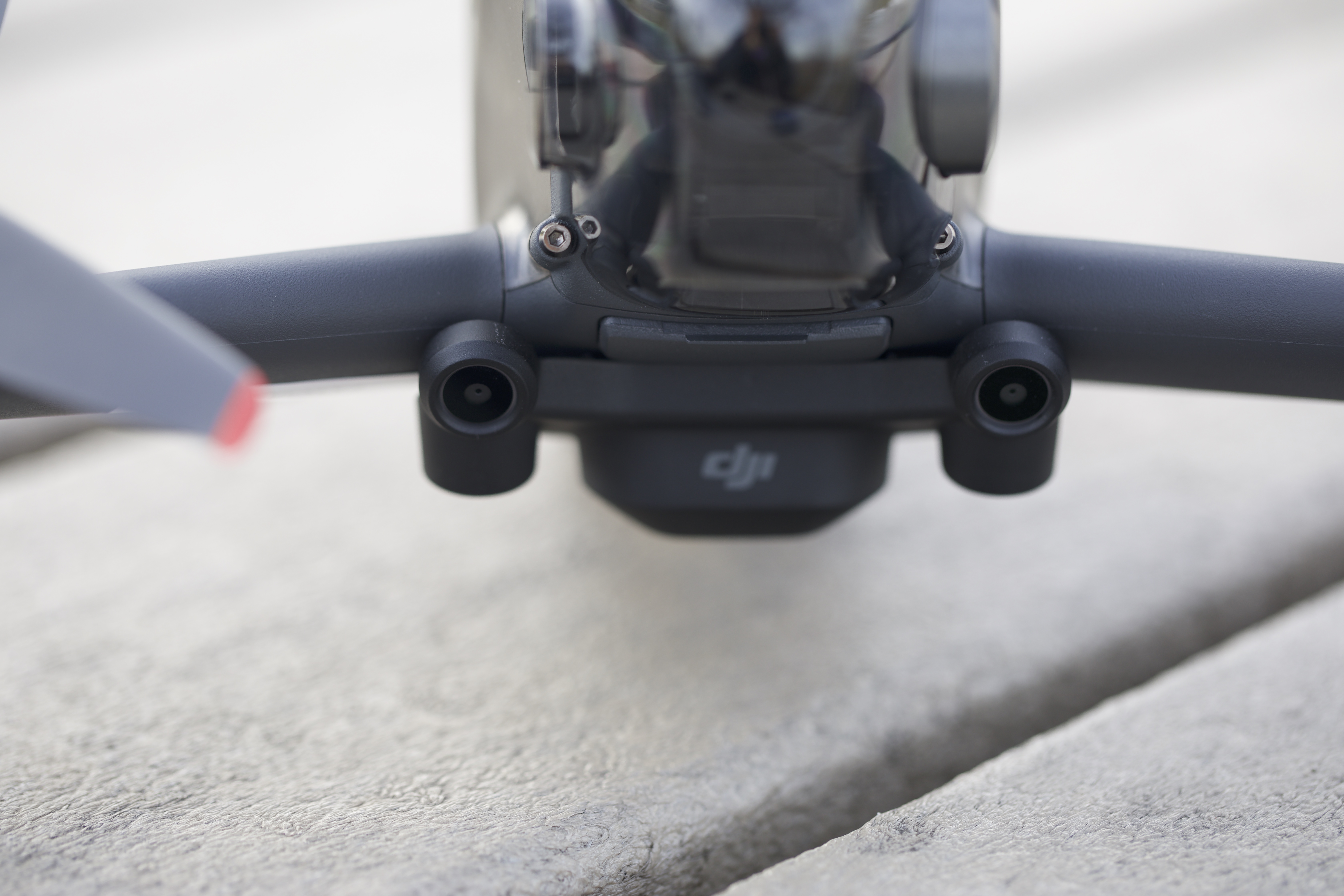DJI has flirted with FPV goggles before, of course. The company got on the burgeoning FPV movement with the launch of its DJI Goggles back in 2016. It was a logical extension for the company that controls around 70% of the drone market, at last count, and a push toward a more mainstream experience for what has largely been the realm of hobbyists.
Today, it takes another important step toward conquering that market with the launch of DJI FPV. The simply named new drone model is aimed at offering a similar off-the-shelf solution for those looking to add a head-mounted display to their flying experience.
The DJI FPV occupies a strange space, both in the DJI ecosystem and the overall drone market. While FPV drones have largely been the realm of more advanced hobbyists and racers, the new model is aimed at beginning and intermediate drone users. In that, it essentially works out of the box. Though unlike racing models, this device isn’t particularly modular or customizable, so you can’t really tweak it for speed.

Image Credits: Brian Heater
There are beginner modes and a new optional motion controller to help ease the learning curve. The drone builds on several generations of DJI consumer hardware and software, both in terms of imaging and controller. There’s even a flight simulator baked in to the app, to help get you acquainted with flying the device virtually before accidently slamming the pricey hardware into a tree.
That’s the other thing that warrants mention up top: This is a $1,299 system. That price gets you the drone, the second-gen FPV goggles, a controller and a battery. The motion controller runs another $199 and additional batteries can be purchased with the Fly More bundle. Of course, drone pricing is a pretty wide spectrum, and racing models tend to be be fairly expensive. The price puts it between the $799 Mavic Air 2 and the $1,599 Mavic 2 Pro, which sports a Hasselblad camera. Given that the FPV goggles retail for $570 on their own, the asking price certainly isn’t outlandish.

Image Credits: Brian Heater
Here’s how DJI’s European Creative Director describes the new system in a release:
Right out of the box, DJI FPV combines the best available technology for a hybrid drone like no other. It can fly like a racer, hover like a traditional drone, accelerate like a homebuilt project and stop faster than any of them. DJI FPV lets the world experience the absolute thrill of immersive drone flight without being intimidated by the technology or spending hours building a system from scratch.
That’s a pretty good assessment of the category here. It’s a way to dip one’s toes into this growing category, but backed with the peace of mind that comes with purchasing a more off-the-shelf solution from a company that knows how to build a good and fairly reliable drone (you’re not going to buy a product in this category that doesn’t give you some problems from time to time).

Image Credits: Brian Heater
It’s not a racing drone, really, but it’s designed to offer a closer version of that experience than the company’s popular Mavic line. In fact, in one mode, it’s capable of speeds up to 87 MPH, with a 0-62 MPH acceleration in two seconds. Obviously, less experienced fliers are going to want to work up to that and familiarize themselves with the intricacies of the first-person view footage. When you flip over from Normal to Manual mode, you lose the hovering and obstacle sensors in the process, making it a lot easier to do some serious damage to the $1,300 drone.
The goggles themselves feature three different modes. Low-latency HD does 1440 x 810p at 60 fps or an increased field of view at 50 fps. Smooth mode increases the frame rate to up to 120 fps. Audience mode connects up to eight additional googles to the single view. The footage is shot with the on-board 4K/60fps 120 Mbps single-axis, image stabilized camera. Footage can be shot in up to 4x slow motion, as well.
[gallery ids="2118665,2118664,2118663,2118662,2118661,2118660,2118659,2118658,2118657,2118656"]
The DJI FPV is available to purchase starting today.

